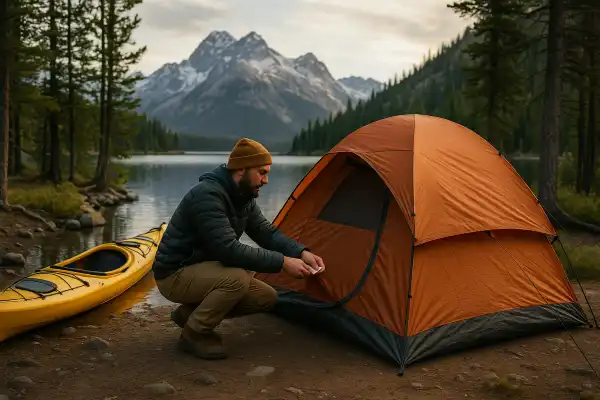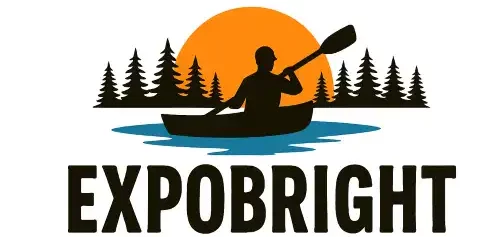Where can you kayak camp in Montana? This question crosses every paddler’s mind when they start dreaming about Big Sky Country’s pristine waters and endless wilderness. Montana’s reputation for rugged mountain terrain, glacier-fed lakes, and wild rivers makes it an irresistible destination for kayak campers seeking both adventure and solitude.
Three years ago, I guided a family through the Flathead Lake region, watching their kids experience their first multi-day paddle trip. Montana has a unique way of turning nervous beginners into confident paddlers—the combination of stunning scenery and accessible waters creates the perfect learning environment while satisfying even the most experienced kayak campers.
Where can you kayak camp in Montana?
Montana offers exceptional kayak camping opportunities across diverse landscapes, from the glacier-fed alpine lakes of Glacier National Park to the historic waters of the Missouri River and the massive expanse of Flathead Lake. The state provides everything from primitive backcountry experiences to developed campgrounds with amenities, making it suitable for kayak campers of all skill levels.

Glacier National Park’s alpine treasures
Glacier National Park contains over 700 lakes, with the most popular and accessible including Two Medicine Lake, Swiftcurrent Lake, Saint Mary Lake, and Lake McDonald. The alpine terrain and glacier-fed streams create extremely picturesque backdrops for kayaking adventures.
Two Medicine Campground offers one hundred campsites in one of the park’s less congested southeastern areas, operating on a first-come, first-serve basis. The campground provides opportunities for canoeing, kayaking, and family-friendly activities, with ruins of an ancient railway chalet existing on the lake’s banks. One section is designated as no-generator to preserve peace, making it ideal for tent camping.
Many Glacier Campground sits on the east side surrounded by mountainous views and serves as the starting point for hiking trails to locations like Grinnell Glacier. The campground accommodates camping and camper cars, with limited exceptions for RVs larger than 21 feet.
For those seeking true wilderness solitude, Kintla Lake offers primitive camping without amenities but provides stunning views as the park’s fourth largest lake, surrounded by high mountains and measuring nearly 8 miles long. Kintla Lake is a canoe and kayaker’s paradise with no motorized vehicles permitted, and it’s especially popular among anglers for its trout population.
Important regulations for Glacier National Park include wilderness permits required year-round for any overnight stay in the backcountry. Between June 15th and September 30th, 70% of wilderness campsites may be reserved in advance, with remaining sites available first-come, first-served no more than one day before the trip begins. Following detection of invasive mussel populations in central Montana, the park implemented its Aquatic Invasive Species Action Plan, requiring boat inspections.
Flathead Lake’s endless possibilities
Flathead Lake, the largest natural freshwater lake in the western United States, measures 28 miles long and 15 miles wide, offering numerous kayaking opportunities. A popular destination is paddling from Big Arm Bay to Wild Horse Island, where you can dock your kayaks and hike for chances to see wild horses.
Flathead Lake features a water trail connecting many landmarks and providing access to paddle-in-only areas, including campgrounds. While the lake has numerous public entry spots, paying day-use fees at one of six state parks around the lake provides easier parking and launching access.
Camping options include family and pet-friendly lakeside accommodations at Stillwater Getaway, located 15 miles north of Whitefish on Lower Stillwater Lake, featuring wall tents, campsites, and a shared mess hall with full kitchen facilities.
Missouri River’s historic waterway
The Missouri River begins at Three Forks in central Montana and travels east, following the same path Lewis and Clark took over 200 years ago. After the dams at Great Falls, the river flows for 200 miles before entering Fort Peck Lake, providing infinite options for multi-day trips or afternoon outings.
The section flowing through Missouri Breaks National Monument represents one of the best places to experience the river and see why it’s designated as a National Wild and Scenic River, remaining mostly unchanged since Lewis and Clark’s exploration. The Lewis and Clark Paddle Trail along the Missouri River through Great Falls offers a 6.25-mile river trail with informational signs about prominent expedition spots.
Fort Peck Lake requires sea kayaks due to its size, and after the lake, no interruptions occur until the North Dakota border and confluence with the Yellowstone River. However, high winds frequently affect all Missouri River sections, making kayaking difficult at times, and numerous dams requiring portaging need careful research, especially for long outings.
Kootenai River wilderness
The Kootenai River starts in British Columbia’s Kootenay National Park before flowing 485 miles into northwest Montana through Libby and Troy. Near Libby, the river offers one of the largest free-flowing waterfalls and numerous whitewater kayaking options, including China Rapids with a 30-foot waterfall and gorge offering Class III and IV rapids.
Below Libby Dam, the river flows 50 miles through Montana before reaching Idaho, surrounded by rugged mountainous terrain and thick forests. The dam regulates flow, but it varies considerably and suddenly, requiring careful planning and local knowledge.
Additional Montana kayak camping destinations
Crystal Lake in central Montana’s Big Snowy Mountains sits at 5,700 feet elevation under Mount Harlow, featuring a US Forest Service campground and non-motorized boat launch. The 46-acre lake is surrounded by hiking and biking trails and attracts birdwatchers, horseback riders, and fishermen.
The Jefferson River features a dedicated paddling trail accessible from Jessen Park in Twin Bridges, taking approximately six days to complete with campsites along the way, ending at Shoshone Landing near Three Forks.
Essential regulations and permits
Montana considers kayaks and canoes to be vessels, but non-motorized vessels are exempt from registration and titling requirements. No license is required to operate a kayak in Montana, though children under 12 must wear life jackets on boats less than 26 feet in motion, and wearable life jackets are required for each person on vessels less than 16 feet long, including canoes and kayaks.
Nonresidents bringing watercraft into Montana must purchase a Vessel AIS Prevention Pass—$30 for motorized watercraft and $10 for nonmotorized watercraft like kayaks. All watercraft entering Montana from out-of-state must be inspected prior to launching at open inspection stations.
Beginning July 1, everyone ages 12 and older needs a Montana Conservation License to access most state lands, though this permit isn’t required when using State Trust Lands for hunting or fishing, as a $2 fee is included in the Montana Conservation License.
Conclusion
Last September, I spent four days paddling the Missouri River section through the Missouri Breaks with my partner, camping under stars unmarred by light pollution and waking to elk bugling across the water. We followed Lewis and Clark’s route, but unlike those historic explorers, we had detailed maps, proper gear, and the knowledge that comes from careful planning.
Following a comprehensive guide makes the difference between a memorable adventure and a potentially dangerous situation for any kayak camper. Montana’s waters demand respect, proper preparation, and understanding of regulations, but they reward paddlers with some of North America’s most spectacular wilderness experiences. With the right planning and equipment, Montana’s lakes and rivers offer kayak camping memories that last a lifetime.
